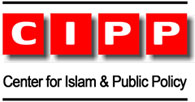Washington DC, the capital of the United States, is also called a city of strangers. Each election cycle brings several thousands newcomers, elected and nominated, to this city. They make policy decisions about the future of the nation during their tenure and then at the beginning of the new cycle the majority of them decide to stay in the city permanently.
The DC diamond, surrounded by a circular road, the Beltway, has its own unique attraction. Every politician of the country dreams about joining the DC circle. However, during the election process the candidates campaign on the slogan that he or she doesn’t have any connection to Washington. While the media pundits around the nation always talk about ‘who controls this city’ and ‘how it works?’
Professor Sulayman Nyang of Howard University describes Washington as a city of twelve tribes who have their own sub-cultures, maintain and developed their own streets, restaurants, languages, abbreviations, etiquettes and sets of agenda. These tribes and their off springs could be explained as follows:
1. White House: including its staff and secretaries of the federal government
2. Congress: members of the both houses and their staff, including the committees’ staff.
3. Legal: Judges, lawyers and the paralegal staff of the lower courts to the Supreme Court
4. Military: Pentagon, the department of defense and military installments including several forts
5. International community: Foreign embassies, World Bank, IMF and other international / regional institutions
6. Business community: multinational companies including the defense industry.
7. Intelligence community: CIA, NASA, FBI and several other intelligence organizations
8. Lobbyists: including public advocacy groups and public relations firms
9. Think Tanks: including research institutions, and universities
10. Media: press, radio, TV – local, national and international correspondents
11. Bureaucracy: from the city government to the federal government
12. Religion: churches, synagogues, mosques, other places of worship and the national religious organizations
The Beltway is a familiar name for DC residents. Traffic is congested on this circular road during rush hour yet one can not avoid traveling on this road when one has business to conduct in the national capital. The Beltway also has another function. It divides Washington into two distinct parts: Inside the Beltway and outside the Beltway.
Scholars and politician have talked about two Americas in the past. Those who are rich and have influence belong to one category while those who are poor belong to another category. The beltway division, on the other hand, is on the basis of different ways of thinking and policy perspectives. Inside the beltway has a different perception of the role of America in the global environment compared to outside the beltway.
The people who are in the category of “inside the beltway” will always talk about strengthening the American military might and advocate its use against any perceived threat. They are worried about the military economy while the “outside the beltway” America is worried about the declining moral economy of the country. Beltway insiders seek to create fear internationally rather than fostering affection and respect for America.
Inside the beltway words take on new meaning. For example military occupation is called liberation; civilian causalities are labeled collateral damage. Beltway insiders are also more concerned about maintaining and expanding the American empire and its hegemony in the world. War against terror is an important tool; the expansion of the defense-industrial complex is an inevitable outcome; and the civil liberties of the American people can be sacrificed for national security.
On the other hand, outside the beltway America has been mobilizing a campaign against the war and for bringing the troops back home. For them, America should be a republic as it was the dream of its founding fathers. It should share its vast resources in alleviating global poverty and creating a peaceful world. The only way of achieving national security is to guarantee the civil liberties of each and every American.
More than the geographical location, the beltway division is about the mindset. Strangely enough, it crosses traditional class, ethnicity, party and ideological lines. One may live anywhere to become part of either of these two Americas.
Georgetown University’s ACMCU is located inside the beltway. However, with its mission, vision and outlook, it is really an institution of outside of the beltway. Not only is the Center building a strong bridge of understanding between the Muslim world and the West, it is also working hard, with its strategic location, to become a bridge of communication and understanding between the two Americas; inside the beltway and outside the beltway.
By Zahid Bukhari
Dr. Zahid Bukhari is the Director of the American Muslim Studies Program at the Prince Alwaleed Bin Talal Center for Muslim-Christian Understanding.
